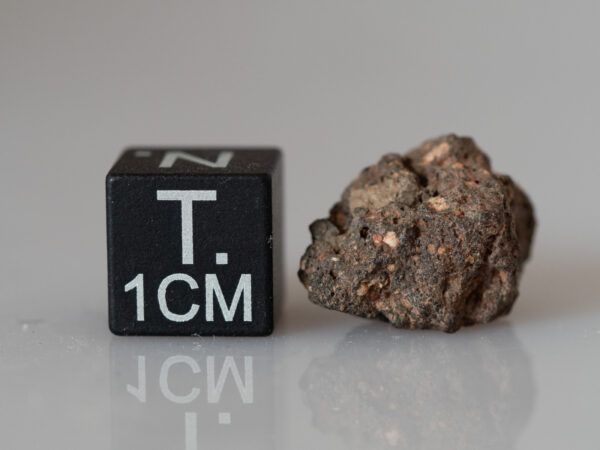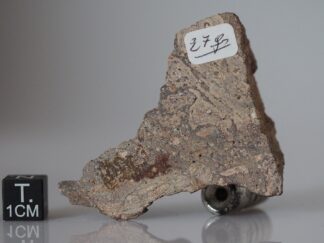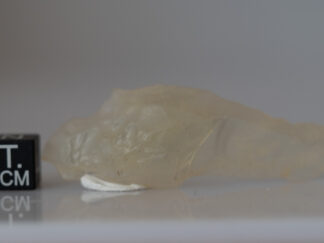Description
On offer: a 8.09 g specimen.
Dimensions: ~60 x 19 mm
What you get: this 8.09 g specimen, a signed label.
Type: Impactite
Country: Libya
The origin of desert glass is uncertain. Meteoritic origins have long been considered possible, and recent research links the glass to impact features, such as zircon breakdown, vaporized quartz and meteoritic metals, and to an impact crater. Some geologists associate the glass with radiative melting from meteoric large aerial bursts, making it analogous to trinitite created from sand exposed to the thermal radiation of a nuclear explosion. Libyan Desert glass has been dated as having formed about 29 million years ago. Like obsidian, it was knapped and used to make tools during the Pleistocene.
The glass is nearly pure silica which requires temperatures above 1,600 °C to form – hotter than any igneous rock on Earth. However, few mineral relics survived from whatever caused the melting, including a form of quartz called cristobalite, a rarely occurring high-temperature mineral; and grains of the mineral zircon, although most have reacted to form a higher-temperature mineral called zirconia. Ideas about how the glass formed include melting during meteorite impact, or melting caused by an airburst from an asteroid or other object burning up high in Earth’s atmosphere.
First finds occurred in 1932 and there have been numerous expeditions since then.






